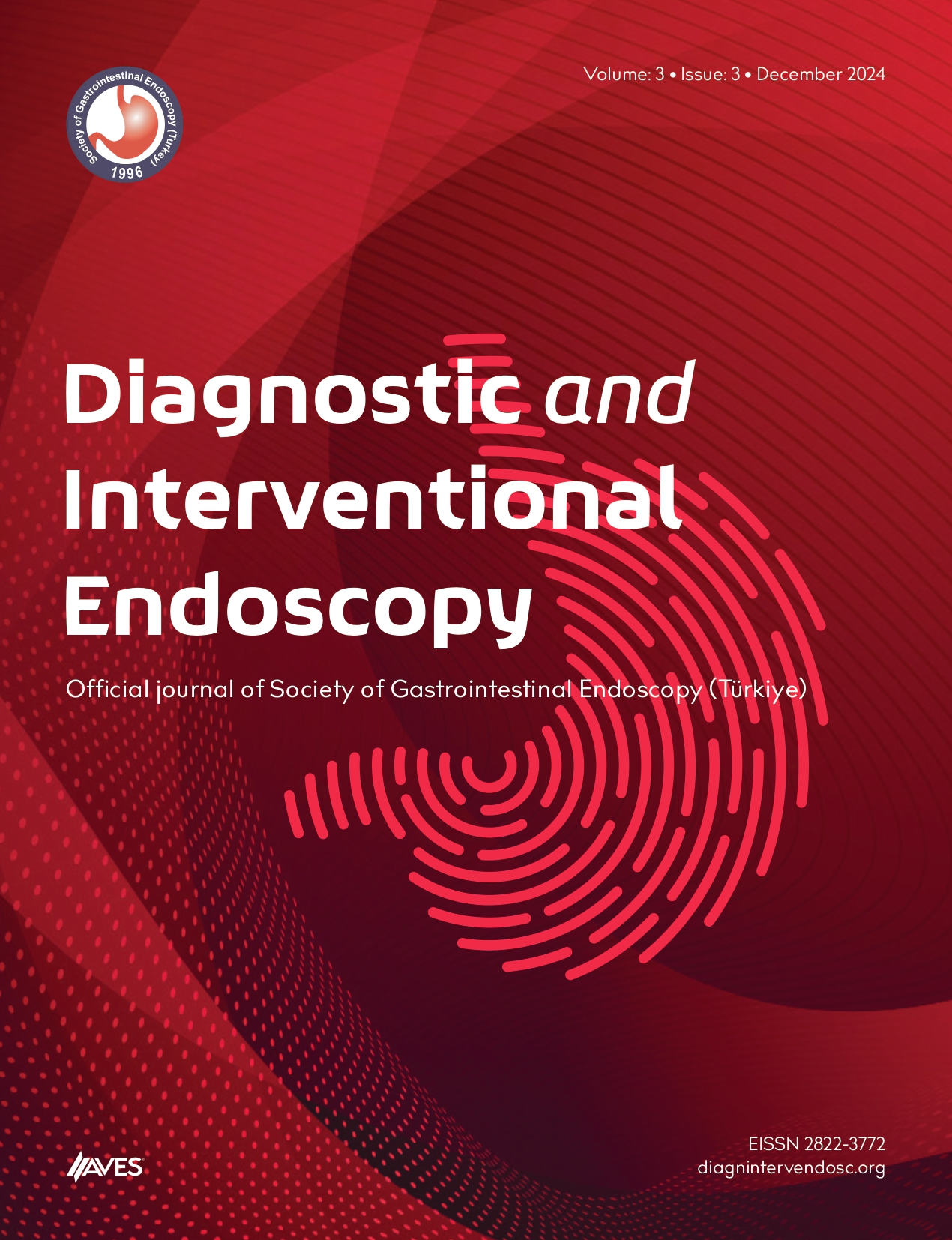Objective: Endoscopic retrograde cholangiopancreatography is an indispensable method in the diagnosis and treatment of pancreaticobiliary diseases. It may cause complications that may result in mortality. The aim of this study is to evaluate the first endoscopic retrograde cholangiopancreatography experiences of a newly established center.
Methods: Patients who underwent endoscopic retrograde cholangiopancreatography in our clinic between September 2016 and March 2019 were screened retrospectively. Endoscopic retrograde cholangiopancreatography indication was established by imaging methods such as clinical, laboratory, abdominal ultrasonography and magnetic resonance cholangiography. Patients who did not have sufficient data in their files were not included in the study. The procedures were performed with sedoanalgesia under optimal conditions in the operating room accompanied by an anesthesiologist.
Results: Of the 319 patients included in the evaluation, 172 (54%) were female, with a mean age of 54. 97 ± 18.09; the age range was 14–100 years. Abdominal ultrasonography was requested in 185 (58%) patients, and magnetic resonance cholangiography was requested in 134 (42%) patients for endoscopic retrograde cholangiopancreatography indication. Endoscopic retrograde cholangiopancreatography indications involved the following indicated according to the number of cases: 241 (75.5%) cholelithiasis and choledocholithiasis, 25 (7.5%) cholecystectomy and choledocholithiasis, 26 (8%) hydatid cyst open in biliary tract, 20 (6%) malignancy-stenosis, 20 (6%) previously inserted stent removal, 10 (3%) post-transplant stenosis, 10 (3%) postoperative bile leakage, 5 (1.5%) primary sclerosing cholangitis, and 5 (1.5%) other causes (bilioma, hemobilia, recurrent pancreatitis of unknown cause, etc).Table 1 The procedure could not be performed in approximately 20 (6%) patients owing to various reasons (respiratory depression, inability to cannulate, etc). All patients received intravenous fluid replacement before the procedure. Young female patients were administered rectal indomethacin before the procedure. An anterior incision sphincterotomy was performed in 77 patients (24%). Complications related to endoscopic retrograde cholangiopancreatography occurred in 37 patients (11.5%) in total. Pancreatitis developed in 11 (3.5%) patients after endoscopic retrograde cholangiopancreatography; 3 of them had a severe necrotizing course, and bleeding occurred in 11 (3.5%) patients. Perforation was detected in 5 patients (1.5%), a plastic stent was placed in 2 of them, 1 was followed up with medical treatment without stent, surgery operation was performed in 2 patients, 1 of the operated patients died (mortality owing to endoscopic retrograde cholangiopancreatography: 0.3%). Cholangitis and cholangitis-like infections were detected in 10 patients (3%) and could be controlled with medical treatment.Table 2
Conclusion: Endoscopic retrograde pancreatography is an indispensable procedure for the diagnosis and treatment of cholestatic diseases. Choledocholithiasis is the most common indication for endoscopic retrograde cholangiopancreatography in two-thirds of patients. Complications occurred in approximately 10% of patients after endoscopic retrograde cholangiopancreatography, and one-third of these complications have a serious course, including mortality.
Cite this article as: Uyanıkoğlu A, Efe SC, Güler MS, Bertan A, Bayhan İ. Evaluation of endoscopic retrograde cholangiopancreatography results: Single-center real-life data. Diagn Interv Endosc. 2022;1(1):7-11

.png)


.png)